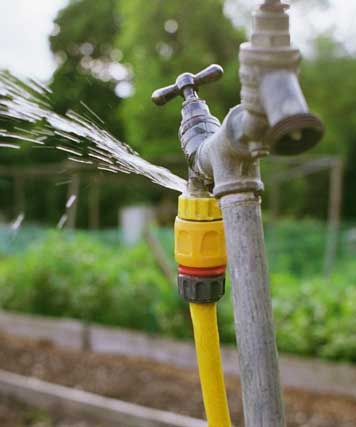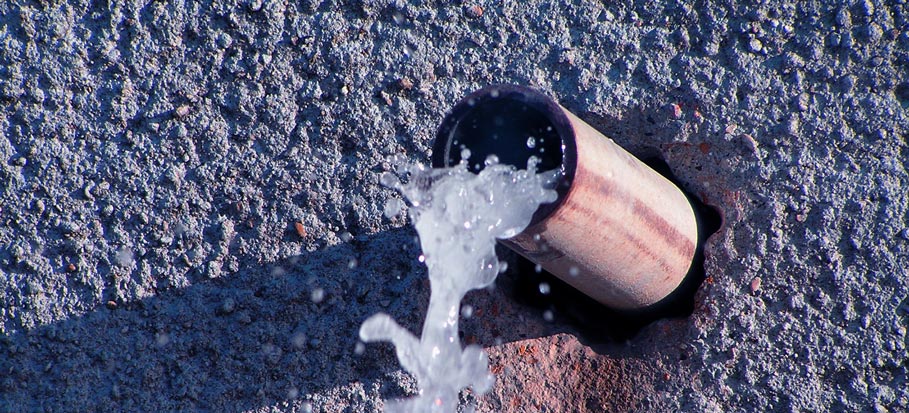Finding Sneaky Water Line Leaks: Six Proven Techniques
Go ServicesEach person has his or her own piece of advice involving Leaking water lines.

Early detection of leaking water lines can alleviate a possible disaster. Some tiny water leaks might not be visible.
1. Take A Look At the Water Meter
Every residence has a water meter. Checking it is a surefire manner in which aids you find leakages. For beginners, switch off all the water sources. Make sure no person will flush, utilize the tap, shower, run the cleaning equipment or dishwasher. From there, most likely to the meter and watch if it will change. Since nobody is utilizing it, there must be no activities. That shows a fast-moving leakage if it relocates. Also, if you spot no changes, wait an hour or 2 and check back again. This indicates you might have a slow leakage that could even be below ground.
2. Examine Water Intake
Examine your water expenses as well as track your water consumption. As the one paying it, you should see if there are any type of inconsistencies. If you find sudden changes, in spite of your intake coinciding, it suggests that you have leakages in your plumbing system. Keep in mind, your water bill should fall under the same array each month. An abrupt spike in your costs suggests a fast-moving leak.
A stable rise every month, even with the same routines, shows you have a slow leakage that's likewise slowly rising. Call a plumber to thoroughly examine your building, particularly if you really feel a warm location on your flooring with piping below.
3. Do a Food Coloring Test
When it comes to water consumption, 30% comes from toilets. If the color somehow infiltrates your bowl throughout that time without flushing, there's a leakage between the container as well as dish.
4. Asses Outside Lines
Do not forget to inspect your exterior water lines too. Examination faucets by attaching a yard hose. Must water permeate out of the connection, you have a loose rubber gasket. Replace this and make sure all connections are limited. It will certainly assist get it professionally analyzed and also preserved yearly if you have actually obtained a lawn sprinkler system. One little leak can throw away lots of water and increase your water expense.
5. Assess the scenario and examine
Property owners need to make it a behavior to check under the sink counters and also even inside cabinets for any bad odor or mold development. These 2 red flags suggest a leak so timely focus is called for. Doing regular evaluations, even bi-annually, can conserve you from a significant issue.
Examine for discolorations and compromising as the majority of pipelines and also devices have a life expectancy. If you presume leaking water lines in your plumbing system, do not wait for it to rise.
Early discovery of leaking water lines can alleviate a prospective disaster. Some small water leakages might not be noticeable. Examining it is a surefire method that helps you uncover leakages. One small leak can lose bunches of water and spike your water bill.
If you suspect leaking water lines in your plumbing system, do not wait for it to escalate.
WARNING SIGNS OF WATER LEAKAGE BEHIND THE WALL
PERSISTENT MUSTY ODORS
As water slowly drips from a leaky pipe inside the wall, flooring and sheetrock stay damp and develop an odor similar to wet cardboard. It generates a musty smell that can help you find hidden leaks.
MOLD IN UNUSUAL AREAS
Mold usually grows in wet areas like kitchens, baths and laundry rooms. If you spot the stuff on walls or baseboards in other rooms of the house, it’s a good indicator of undetected water leaks.
STAINS THAT GROW
When mold thrives around a leaky pipe, it sometimes takes hold on the inside surface of the affected wall. A growing stain on otherwise clean sheetrock is often your sign of a hidden plumbing problem.
PEELING OR BUBBLING WALLPAPER / PAINT
This clue is easy to miss in rooms that don’t get much use. When you see wallpaper separating along seams or paint bubbling or flaking off the wall, blame sheetrock that stays wet because of an undetected leak.
BUCKLED CEILINGS AND STAINED FLOORS
If ceilings or floors in bathrooms, kitchens or laundry areas develop structural problems, don’t rule out constant damp inside the walls. Wet sheetrock can affect adjacent framing, flooring and ceilings.
https://www.servicemasterbyzaba.com/blog/how-to-detect-water-leakage-in-walls/

I came across that post about Hacks to detect leaks while surfing around the web. Appreciated our piece of writing? Please share it. Let others check it out. Many thanks for your time. Visit us again soon.
Excellence? Just call!